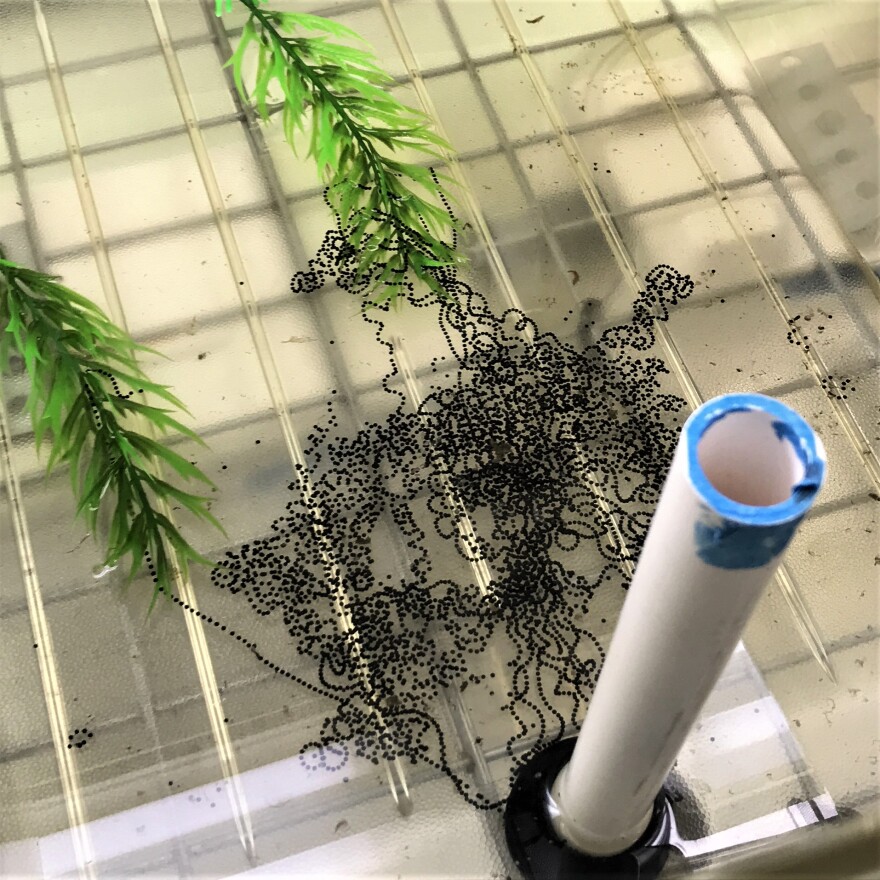Everyone deserves a shot at love.
That’s especially true if you're a Houston Toad. The Texas native is at risk of being wiped out. It's been on the endangered species list since 1970, but staff at the Fort Worth Zoo are giving this squat, brown toad a fighting chance by playing matchmaker.
"They seem to have faces only a mother can love," said Diane Barber, the zoo's curator of ectotherms, which refers to cold-blooded animals like reptiles and amphibians. But, the toad's furrowed brow isn't stopping her team from helping this little amphibian shoot its shot.
"Right now, we have close to 200 toads," Barber said. "Males and females are kept separately in groups until we start breeding them."

Since 2010, she and her team have been breeding Houston toads as part of a highly-successful conservation program with partners across the state.
“With Houston Zoo, we've been putting out over a million eggs and tadpoles every year," she said. "That's an incredible amount of animals to be putting out on the landscape.”
The toads are housed in the Texas Native Amphibian Center on the outskirts of the zoo. Clear containers stacked in neat rows each hold a few creatures, each waiting for their turn to make a love connection.
Allison Julien, a post-doc researcher at the zoo, steps in whenever the toads need a little encouragement.
That can be as simple as injecting the animals with hormones to stimulate their breeding behaviors. And, when that doesn’t do the trick?
“We actually do in vitro fertilization or artificial insemination," Julien said.
A stud bookkeeper keeps track of all the eligible bachelors and bachelorettes. Every toad gets assigned a number, which gets put in the stud book. Barber then runs all the toad's info through a software program that’ll help each toad find a match.
"So, then we'll get what's called a Mate RX. It's this gigantic table that shows you what appropriate pairings you could put together," she said.
In other words, Barber wants to avoid pairing up toads that could be siblings or first cousins.
“I also have to look at the size of the toads because the males cannot be larger than the females because they could potentially drown them," she said.
This year, the Fort Worth Zoo produced more than 430-thousand eggs. They look like tiny, black string beans encased in clear jelly. Once the eggs are accounted for, it's off to a release site near Bastrop in central Texas.

Barber says the hope is that these breeding efforts will boost dwindling populations in the wild.
“Unfortunately, most of their habitat is gone," she said. "Now you don't really see a lot of longleaf pine in the state of Texas, right? That was just due to habitat alteration for agriculture, primarily.”
The Fort Worth Zoo and its partners have received a federal grant to boost their efforts. It's set to triple their breeding capacity next year.
"It's a big milestone to show that we are having some good success," she said. "Those toads that returned to the breeding pond were also genetically analyzed, and we know that at least 32 percent of them came from the captive program in Houston and Fort Worth."
Still, even these tiny toads need wide open spaces to proliferate again. Barber said there's plenty of privately-owned land that could be made to benefit the Houston Toad.
“One of our big priorities is trying to go out into some of these historic counties to get additional landowners on board and sign safe harbor agreements,” she said.
Those are voluntary pledges private landowners can make to preserve important habitat on their lands. Meanwhile, Barber and her team are already preparing for another round of amphibian romance next spring.

Got a tip? Email Miguel Perez at mperez@kera.org. You can follow him on Twitter @quillindie.
KERA News is made possible through the generosity of our members. If you find this reporting valuable, consider making a tax-deductible gift today. Thank you.
Copyright 2022 KERA. To see more, visit KERA. 9(MDAwMTM1NDgzMDEyMzg2MDcwMzJjODJiYQ004))

